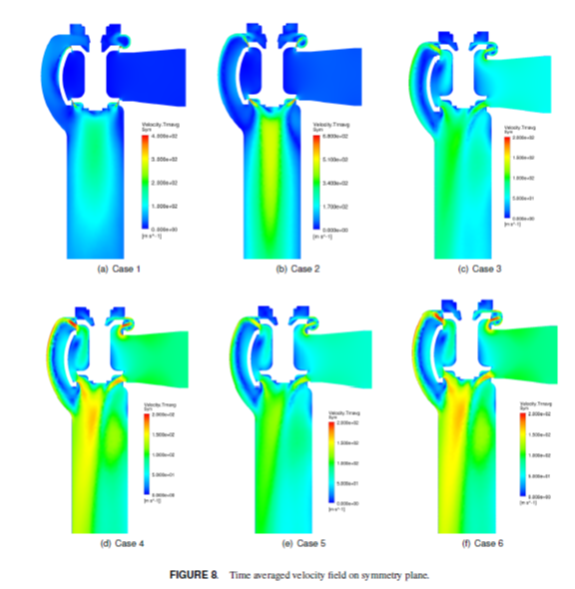Proceedings of ASME Turbo Expo 2014 – GT2014-26982
The continuously growing request for high operational flexibility also for large scale steam turbine creates new challenges for control valve design. Such components, subjected to large static loads, may also experience strong vibrations due to unsteady turbulent fluctuations downstream the throttling section, which need to be confined sufficiently far from structural natural frequencies in the entire range of operating conditions. This work is focused on a computational analysis of the unsteady steam flow developing within a realistic double-seat control valve employed in industrial steam turbine. Actual operating conditions are considered both in terms of steam inflow pressure and temperature, flow rates and plug height. Three plug heights were considered: two corresponding to almost closed plug thus subjected to choked flow, and the third verified at 4 different steam rates. In order to capture the unsteady nature of the flow and verify the fluid-dynamic forcing frequency, the Scale Adaptive Simulation principle, as implemented in Ansys CFX 14.5 code, has been employed. Computations were run with a computational time step of 0.0001 s and an effective simulation window of 0.2 s for time averaged values and pressure time signals. The unsteady response is monitored analyzing the frequency spectra of both integral variables (i.e. forces and moment on plug) and punctual pressure oscillations. Analysis of results showed that it is possible to correlate the principal frequency and amplitude with the operating conditions. Strouhal number based on plug diameter and bulk flow velocity remains in fact constant independently on operating conditions.
http://proceedings.asmedigitalcollection.asme.org/proceeding.aspx?articleid=1907394

